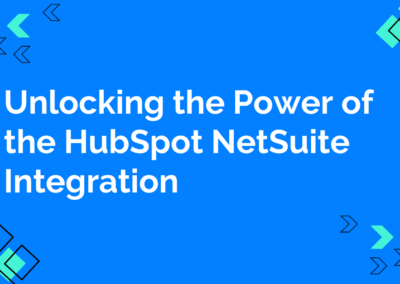CRM has become an essential tool for businesses of all sizes. Companies use customer relationship management for many reasons, but the overall goal is to improve the customer experience and increase sales.
What is a CRM?
CRM software is a system for managing customer relationships. CRM can help your business keep track of interactions, data, and notes about customers or potential customers.
Companies use CRM for many reasons, but the overall goal is to improve the customer experience and increase revenue.
At the end of the day, A CRM is just a tool. It doesn’t make magic happen, but with the right processes and management oversight, a CRM can be extremely powerful for the growth of a business.
Why HubSpot CRM?
Intuitive for front-line teams
HubSpot CRM was built from the ground up to be ready for the front-line teams of the modern world.
In 2014, when HubSpot CRM was first released, most CRM systems were pretty complicated and manual to use. These systems were primarily designed for management and executive teams.
HubSpot took a different approach, starting with the capabilities of front-line teams. For example, HubSpot CRM takes care of all the little details – logging emails, recording calls, and managing your data – freeing up valuable time.
This is a big reason why HubSpot CRM frequently ranks as one of small businesses’ best CRM software products.
Scalable for growth
One of the best advantages of HubSpot is its scalability. Meaning if you are an early-stage startup, you can adopt HubSpot as your CRM and use the free version.
As you get traction and grow your startup, you can upgrade to new plans and add new ‘hubs’ to take advantage of new capabilities that help scale your company up to its ‘enterprise’ platform.
Improved visibility
HubSpot CRM creates an environment focused on clear communication. All activity associated with each contact/company/deal/ticket is automatically tracked and recorded on the records timeline record.
You can learn many things about your customer, including where the contact was created and what web pages they have viewed, allowing you to expedite better decision-making.
Customized Experience
The list of customization options is endless, but at the core, HS can adapt to how a company works. All of their ‘Hubs’ are customizable – from property management to automated workflows and reporting.
HubSpot offers one of the largest App Marketplaces in the CRM space, offering over 1000 integration options.
Integrations connect your software to third-party applications so they can share information. Adding these connections allows you to enhance your system’s functionality while providing features unimaginable within your current software.
The Basics of Hubspot CRM Optimization
Optimizing your HubSpot CRM will allow you to utilize the tools you are investing in to the fullest. There are a few basics within HubSpot CRM optimization that rein supreme.
By focusing on these simple steps, you can save time and build your CRM to its fullest potential. Simple things like organizing your data and implementing automation can result in noticeable results.
Keep Your Data Organized
Data organization is crucial to maintaining your CRM.
By keeping your data organized, you create an environment that is conducive to new ideas and strategies. But above all, data organization benefits your customers.
Create Custom Fields
Creating custom fields in HubSpot allows you to add extra properties to your CRM contact details.
For each custom field, you can set an object type, group, label, and description. Custom fields should be created with a goal in mind, such as gaining contact information, demographic information, and contact/user information.
Keep Your Data Clean
CRM data hygiene is a process that ensures the cleanliness of the data in your CRM. The purpose of it is to keep your data error-free and up to date, while also ensuring it is comprehensive and full of high-quality, relevant information.
Bad data includes irrelevant or outdated information, incomplete contact information, or conflicting data — such as multiple phone numbers for two contact inputs.
If data is not applicable, then there’s not a lot you can do regardless of your CRM vendor.
Automate Where You Can
Automation can eliminate tedious and manual processes. You can use simple automation within existing tools to manage your follow-up. For more complex processes, you can use workflows or sequences.
According to HubSpot, Sales people spend 17% of their day on data entry. Depending on your account’s subscriptions, you can use different tools for automation, such as:
- Forms or marketing email tool
- Ticket and deal pipeline and stages
- Sequences
- Workflows
Use workflows
HubSpot workflows are a powerful tool that makes nurturing leads, managing your sales pipeline, and marketing automation incredibly easy.
This tool can structure your process accurately and give you the ability to execute marketing actions in record time.
Create a workflow to automate your business processes and make your team more efficient. From there, you can set enrollment criteria that will automatically enroll records and act on your contacts,
Conclusion
When implementing new software, there will always be a learning curve. HubSpot CRM is customizable and provides many options to relieve the issues that may become problems.
Ready to take the next step with HubSpot CRM? Talk to SmarkLabs about your CRM requirements.




